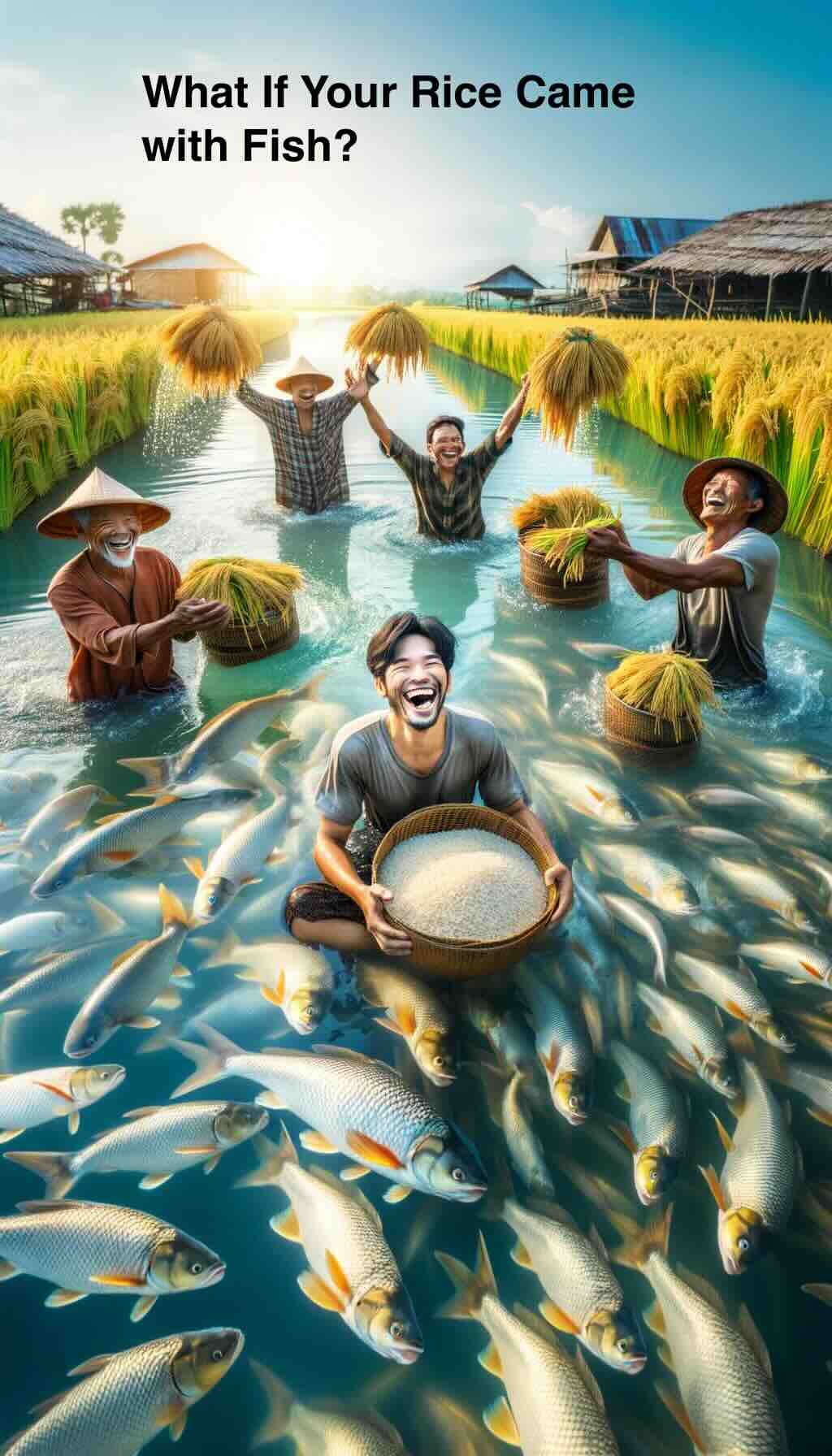
In the quest for sustainable agriculture, an ancient practice whispers the secrets of harmony between land and water, fish and grain. This practice, known as integrated rice-fish farming, not only paints a picture of ecological balance but also sketches the blueprint for a future where agriculture works with nature, not against it. Here, we dive into the depths of rice paddies, where the humble rice fish emerges as a champion of sustainability, nutrition, and economic resilience.
The Symbiotic Symphony
At the heart of integrated rice-fish farming lies a simple yet profound principle: the symbiotic relationship between rice plants and aquatic life. Rice paddies, with their standing water, create an ideal habitat for fish, which, in turn, contribute to the health and productivity of the rice crops. This age-old method, perfected over generations in the wetlands of Asia, offers lessons in efficiency and environmental stewardship.
Fish navigate through the flooded fields, their movements aerating the water and preventing the proliferation of weeds and pests. Their waste acts as a natural fertilizer, enriching the water with nutrients that rice plants eagerly absorb. This cycle of mutual benefit reduces the need for chemical inputs, protecting local ecosystems and reducing farmers’ reliance on costly fertilizers and pesticides.
A Bounty Beyond the Harvest
The benefits of integrating fish into rice paddies extend far beyond crop yield and pest control. Communities practicing this form of agriculture enjoy a diversified diet, as the fish provide a crucial source of protein, omega-3 fatty acids, and essential nutrients. This integration not only secures a staple grain but also ensures a steady supply of freshwater fish, a vital nutritional resource in many parts of the world.
Economically, rice-fish farming offers a dual income stream. Farmers can harvest both rice and fish, increasing their resilience against market fluctuations and environmental challenges. The practice also opens up new markets, catering to the growing demand for sustainably produced food.
The Ripple Effect on Ecosystems and Communities
Integrated rice-fish farming stands as a testament to agriculture’s potential to support biodiversity. These rice paddies become thriving wetland ecosystems, attracting birds, beneficial insects, and other wildlife. The increased biodiversity helps to control pests naturally and maintains ecological balance, showcasing a model of farming that contributes positively to the surrounding environment.
Moreover, this practice fosters community development and women’s empowerment. It provides opportunities for women and youth to engage in the farming process, from fish rearing to marketing, enhancing their economic independence and social standing within their communities.
Navigating Challenges and Embracing Innovation
Despite its numerous benefits, the adoption of rice-fish farming faces challenges. These include the need for specific knowledge and skills, initial setup costs, and market access for the harvested fish. However, innovations in aquaponics and sustainable farming technologies are making it easier for farmers worldwide to adopt and adapt this integrated approach to their local conditions.
The Future Flourishes in Flooded Fields
As we stand at the crossroads of dietary needs and environmental sustainability, integrated rice-fish farming illuminates the path forward. It exemplifies how traditional knowledge, when aligned with modern sustainable practices, can offer solutions to some of our most pressing challenges: food security, ecological degradation, and economic vulnerability.
In Conclusion: Sowing Seeds of Change
The story of rice fish is a narrative of hope and harmony. It teaches us that the future of agriculture may well lie in the wisdom of the past, in practices that cherish and nurture the complex web of life. As we embrace the rice fish revolution, we step closer to a world where our meals nourish not just our bodies but the planet that provides them.
10 FAQs for Could Rice Fish Be the Future of Farming?
What is integrated rice-fish farming?
It’s a sustainable agricultural practice that combines rice cultivation and fish farming in the same field, creating a symbiotic ecosystem where both can thrive.
How does rice-fish farming benefit the ecosystem?
This method promotes biodiversity, improves water quality, reduces pests and weeds without chemicals, and enhances soil fertility through natural fish waste.
Can rice-fish farming improve farmers’ income?
Yes, by providing two sources of income (rice and fish), it increases economic resilience against market fluctuations and crop failures.
Is rice-fish farming labor-intensive?
Initially, it may require more effort to set up, but it ultimately reduces labor by minimizing the need for fertilizers, pesticides, and weeding.
What types of fish are typically used in rice-fish systems?
Common choices include carp, tilapia, and local species adaptable to stagnant water and capable of contributing to the ecosystem’s health.
Are there environmental conditions best suited for rice-fish farming?
Warm climates with abundant water supply, typical of rice-growing regions, are ideal. However, innovative techniques are adapting the practice to various environments.
How does rice-fish farming affect rice and fish quality?
The practice can lead to higher quality rice by reducing chemical use and provide nutritious fish as a protein source, enhancing food security.
Can rice-fish farming be practiced on a small scale?
Absolutely, it’s scalable from small family farms to larger commercial operations, making it accessible to diverse agricultural communities.
What challenges does rice-fish farming face?
Challenges include water management, predation on fish, and initial setup costs, but ongoing research and community support are addressing these issues.
How can I start a rice-fish farm?
Begin by researching local conditions and species, possibly consulting with agricultural extension services, and experimenting with small-scale trials to adapt the system to your environment.
Blog Tags
Sustainable agriculture, rice-fish farming, biodiversity, eco-friendly farming, integrated farming systems, food security, agricultural innovation, water quality management, small-scale farming, soil fertility.









